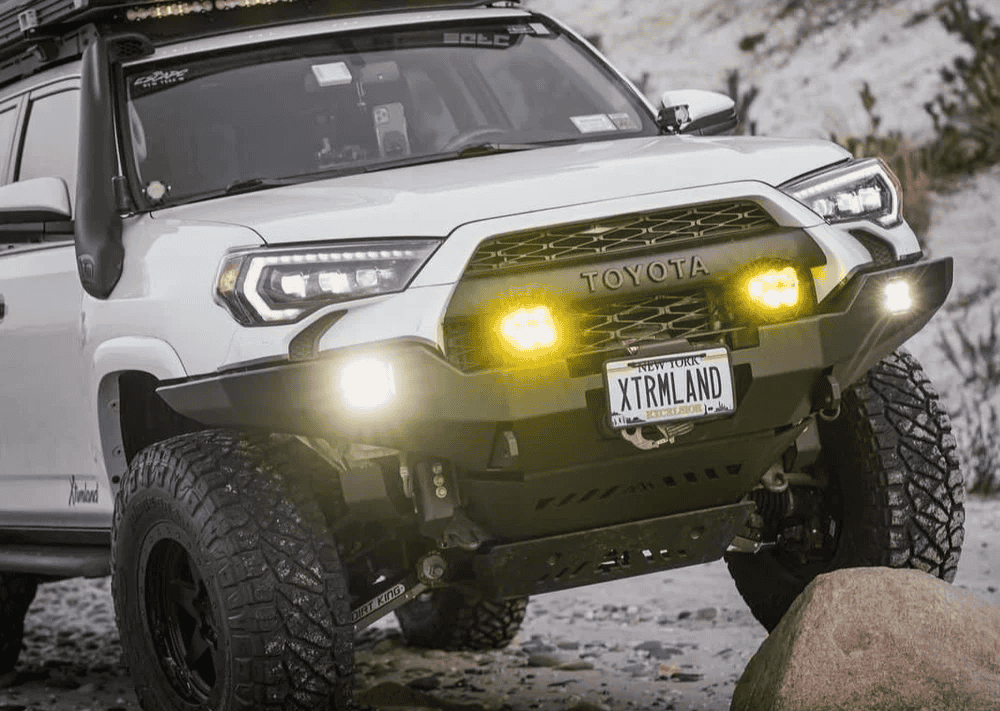Overland Vehicles

A high clearance utility truck is designed to reach places where ordinary service vehicles struggle. The concept centers on vertical distance between the lowest underbody point and the ground, plus the angles that let the body crest berms and approach steep transitions without scraping. Those angles are approach at the front, breakover at the midpoint, and departure at the rear. When these measurements increase, the truck can move over rocks, ruts, washouts, and crowned roads with less risk of damage.
Clearance is only one piece of the story. Payload, center of gravity, and wheelbase length shape how a truck handles uneven terrain while carrying tools, spares, and crew. Shorter wheelbases improve breakover capability, while longer wheelbases help stability under load. The frame, crossmembers, and mounts need to support both the lift and the daily weight of equipment. A truck that goes higher without accounting for these fundamentals can feel vague, brake poorly, or stress driveline parts.
Approach angle determines how steep a slope or obstacle the front can meet without contact. Breakover angle speaks to topping a ridge without the belly touching down. Departure angle protects rear bumpers and overhang when dropping off ledges or leaving job sites with abrupt transitions. Small changes in bumpers, steps, or toolboxes can change these values.
Four wheel drive with low range helps crawl at safe speeds, and locking differentials can keep traction when one wheel lifts. Axle articulation matters in maintaining tire contact. If the suspension binds, the truck skips and loses grip, making clearance less useful. Gearing should match tire diameter to keep torque and shift points in a usable range.
Suspension, tires, and armor determine how well a high clearance build works in the field. The goal is controlled height, predictable steering, and strong underbody protection. Added ride height should come from components that preserve alignment and correct geometry. Taller tires increase effective clearance at the axles but require wheels with proper offsets and load ratings. Underbody armor keeps the vulnerable parts safe when the path gets rough.
Suspension lifts can be accomplished with new springs, matched dampers, and corrected control arms. On heavier chassis, leaf packs or auxiliary springs manage added equipment weight without bottoming. Steering geometry must be addressed to avoid bump steer. On independent front suspension, drop brackets or upper control arms restore angles for proper handling. On solid axles, track bars and caster correction keep the truck tracking straight.
All terrain or hybrid tread patterns offer grip without excessive noise. Load range should match the gross vehicle weight rating and expected payload. Upsizing tires changes the effective gear ratio, which can blunt acceleration and affect towing. A ring and pinion swap returns drivability and keeps transmission temperatures in check during low speed climbs.
Raising ride height changes handling. Braking performance, stability control calibration, and headlight aim need attention after modifications. Weight distribution matters when adding bumpers, winches, or service bodies. Keep loads low and between the axles when possible. Confirm axle ratings, spring capacity, and tire limits before adding racks or enclosed storage.
For fleet managers, durability and service intervals are just as important as raw clearance. Choose components with known maintenance schedules and easy parts availability. Weather sealing for connectors, protected routing for airlines or hydraulics, and corrosion resistance extend service life. In wildfire support, line inspection, forestry, oilfield work, or rural utilities, the best truck is the one that gets there and gets home without surprises.
Recovery equipment is essential. Proper front and rear recovery points, a rated winch with synthetic line, and soft shackles reduce risk during extractions. Communication gear and lighting upgrades help crews work safely at dawn, dusk, or during storms. Underhood or auxiliary power systems can run job site tools off grid without idling for hours.
Even with capability dialed in, responsibility on public roads remains paramount. Verify that lighting, bumpers, and tire coverage meet local regulations. Keep speed conservative on gravel to protect glass and radiators. Train drivers on approach speeds, spotting hand signals, and winch safety. The skill behind the wheel often makes more difference than an extra inch of clearance.
As these fundamentals come together, a high clearance utility build becomes a dependable tool. It blends chassis strength, careful suspension tuning, protective armor, and right sized tires into a system that feels planted, not just tall.
When the route includes washed out crossings or rutted access lanes, an integrated upfit keeps critical systems safe while preserving factory reliability. That includes skid plates tied into strong mounting points, winch ready bumpers designed for approach angle, and lighting that avoids glare while providing even coverage.
If your work overlaps recreational travel or backcountry support, an overland style approach can add range and self sufficiency without compromising payload. See how purpose built overland rigs balance clearance, ride, and utility for long access roads and rough camps.
For specialized builds that require bespoke mounts, internal storage, or reinforced racks, a custom overland upfit aligns protection, performance, and workflow. And if you are evaluating partners, this overview on why choose OZK Customs outlines approach, craftsmanship, and client care.
Every route is different. Share the grades you climb, the loads you carry, and the surfaces you cross. We translate those details into suspension tuning, protective armor, functional bumpers, and lighting that lets your team move with confidence. Explore our approach to overland rigs, then start the conversation so we can build a high clearance utility platform that works as hard as you do.
Ready to turn specifications into real capability. Tell us about your routes, payload, and terrain. Our team will design a purpose-built upfit that rides right, protects critical systems, and delivers reliable access where your work demands.
ADDRESS:
6159 E Huntsville Rd, Fayetteville, AR 72701
PHONE:
(479) 326-9200
EMAIL:
info@ozkvans.com